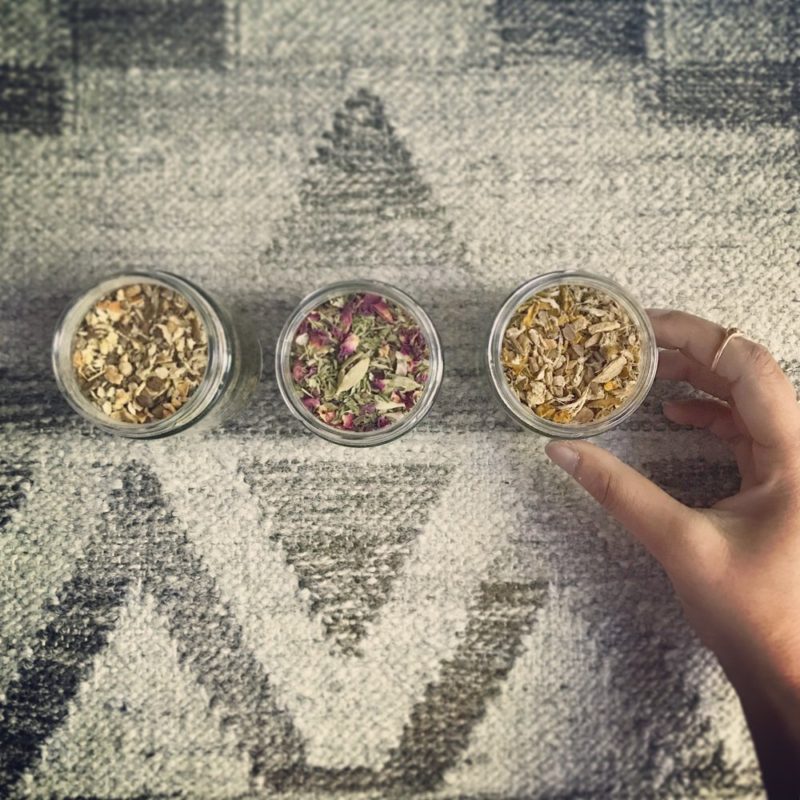
Throughout history, spices have been sought after for flavoring and preserving foods. Hunters and gatherers we likely surprised to discover that wrapping meat in plant leaves while in transit masked odors and enhanced taste, but ever since then we have been using spices for both pleasure-enhancement and medicine, and until the early 19th century, little distinction was made between the two. (Source: Fred Czarra “Spices: A Global History”). Of all the medicinal properties our ancestors observed, there was one common benefit of grinding the flowers, fruits, seeds, barks, leaves and roots of plants: spices increased digestive transit—the body’s ability to efficiently digest, assimilate and move food through the gastrointestinal tract.
Why is this is so remarkable? Second to eating, digestion is an essential daily, life-sustaining event. The process isn’t just about breaking down food and getting rid of waste but the determinant for the quality of our tissues, organs, bodily systems and function. Eating all the healthy, wholesome foods in the world is of little use if your body cannot absorb the nutrients and put them to use building healthy tissue. It’s no wonder, then, that a healthy digestive system is revered in Ayurveda— the 5,000 year old holistic healthy system from India—and that spices are an essential form of Ayurvedic medicine.
According to Ayurveda, spices improve digestion by stimulating your digestive fire, or agni, which in Western terms relates to the production of enzymes and proper circulation of blood and nutrients. When your digestive system is able to break down nutrients from the food you consume, it creates a nourishing substance called ojas, a subtle form of energy that is then circulated throughout your physiology, nourishing your cells, tissues and organs. If your agni is weak, however, the digestive system is unable to fully break down food into this subtle essence. This incomplete digestion creates toxins, the by-product of undigested food, or ama.
Everything you eat either becomes nourishing ojas or lingering ama; the difference lies in the strength of your agni. In order to ensure that you’re creating the former, it is important to not only know which foods to eat but also how to make sure that your digestive fire is functioning at an optimum level. And here is an important point: the way this is done depends upon your mind-body constitution, or dosha.
This term may sound familiar to you: if you’ve been on any yoga/wellness website lately you’ve likely come across a blog post about Ayurvedic mind-body types and how to manage them. Still, let’s back up a bit to place all of this in context:
Ayurveda. Translated from Sanskrit, Ayurveda means “the wisdom of life” or “the knowledge of longevity”. In accordance with this definition, Ayurveda views health as much more than the absence of disease. Health, from this perspective, is the ability to maintain brightness and clarity in mind and body, especially the digestive system—the gatekeeper of good health. Far from a one-size-fits-all solution, Ayurveda believes that each person has a particular pattern of energy—an individual combination of physical, mental and emotional characteristics—which comprises their mind-body type, or dosha, and governs which foods, lifestyle choices—and spices—will best support their overall health.
This is how Ayurveda accounts for why some people can eat a five-course meal with ease, while others can barely finish a salad, or why some people are are hyperactive and fast-moving, while others steady and deliberate. Doshas, the biological energies found throughout the human body and mind, exert influence upon all physical and mental processes according to the ratio in which they are present.
While there are billions of us humans roaming this earth, there are just three doshas that govern the structure, function and movement of each and every cell, in each and every body. Known as Vata, Pitta and Kapha, these three forces are derived from the five great elements—ether (space), air, fire, earth, water and earth—and their related properties.
Vata. This dosha derives from the elements of space and air and translates as “that which moves things.” It is the energy of movement and the force governing all biological activity. Vata is often called the “King of the doshas,” since it governs the body’s greater life force and gives motion to Pitta and Kapha.
The main locations of Vata in the body are the colon, thighs, bones, joints, ears, skin, brain, and nerve tissues. Physiologically, Vata governs anything related to movement, such as breathing, talking, nerve impulses, movements in the muscles and tissues, circulation, assimilation of food, elimination, urination and menstruation. Psychologically, Vata governs communication, creativity, flexibility and quickness of thought.
Vata digestion, like the wind, is unpredictable and erratic. Sometimes you eat a meal and feel nourished and satisfied with no digestive issues, other times you bloat like a balloon. Other symptoms of Vata digestion include gas and constipation, sometimes interchanging with loose stool. If this sounds like you, a diet that’s the opposite of ether and air will help ground and steady your constitution: rather than, light, raw cold foods like salads, smoothies, popcorn and crackers, try warm, nourishing foods, like root vegetables and healthy fats and digestive—enhancing spices like ginger, cinnamon, cardamom, cumin, coriander seed, asafoetida, black pepper and Himalayan pink salt.
Pitta. This dosha derives from the elements of fire and water and translates as “that which cooks.” It is the energy of digestion and metabolism in the body. While Pitta is most closely related to the element of fire, it is the liquid nature of these substances that accounts for the element of water in Pitta’s make-up.
The main locations of Pitta in the body are the small intestine, stomach, liver, spleen, pancreas, blood, eyes and sweat. Physiologically, Pitta provides the body with heat and energy through the breakdown of complex food molecules. It governs all processes related to conversion/transformation throughout the mind and body. Psychologically, Pitta governs joy, courage, willpower, anger, passion and mental perception. It also provides the light for a sharp intellect.
Pitta digestion, like a roaring fire, is usually strong and intense. If you miss a meal, you feel irritable, desperate for a bite (aka. hangry) and may experience hyperacidity or heartburn. Other symptoms of Pitta digestion include loose stools, burning sensation when eliminating and overheating after meals.
If this sounds like you, cool, hydrating foods and plenty of leafy greens will soothe the flames of your fire. Rather than hot, oily and spicy foods that aggravate it, emphasize sweet, cooling spices like fennel seed, coriander seed, turmeric, cardamom and fresh herbs.
Kapha: This dosha derives from the elements of earth and water and translates as “that which sticks.” It is the energy of building and lubrication that provides the body with physical form, structure, and the smooth functioning of all its parts. Kapha can be thought of as the essential cement, glue and lubrication of the body in one.
The main locations of Kapha in the body are the chest, throat, lungs, head, lymph, fatty tissue, connective tissue, ligaments and tendons. Physiologically, Kapha moistens food, gives bulk to our tissues, lubricates joints, stores energy and relates to cool bodily fluids such as water, mucous and lymph. Psychologically, Kapha governs love, patience, forgiveness, greed, attachment and mental inertia. With its earthly makeup, Kapha grounds Vata and Pitta and helps offset imbalances related to these doshas (and their elemental attributes).
Kapha digestion, like mud (earth + water), is heavy and slow as a snail. You eat a meal and feel stuffed for the next six hours or exhausted and in need of a nap. In fact, you may barely eat but your body likes to hold on to what you do consume. Other symptoms of Kapha digestion include include slow metabolism, weight-gain and sticky stool. If this sounds like you, lighter meals and warm and well-spiced foods will stimulate and invigorate your system. Rather than being weighed down by dairy, sugar, starches, fried foods and excess protein, reach for seasonal produce and warming spices like ginger, cinnamon, clove, cayenne, mustard seeds, turmeric, black pepper and detoxifying herbs like basil and parsley.
Then there’s a balanced digestive system. You eat a meal and feel comfortable after, with no bloating, gas, hyperacidity or lethargy. You have one to two healthy daily bowel movements without loose stools or constipation. Symptoms of healthy agni include daily bowel movements, absence of digestive discomfort, strong ojas, radiant skin and sufficient energy. All of this not on the occasional day, but the natural state of your digestion, day after day. Sounds great, right?
This is why it’s important to know what foods work for your body—which vegetables, fruits, grains and sugars support the production of ojas and which create ama. Knowing your dominant dosha is Ayurveda’s key to unlocking this mystery and in doing so, transforming your pantry into a modern day apothecary.


